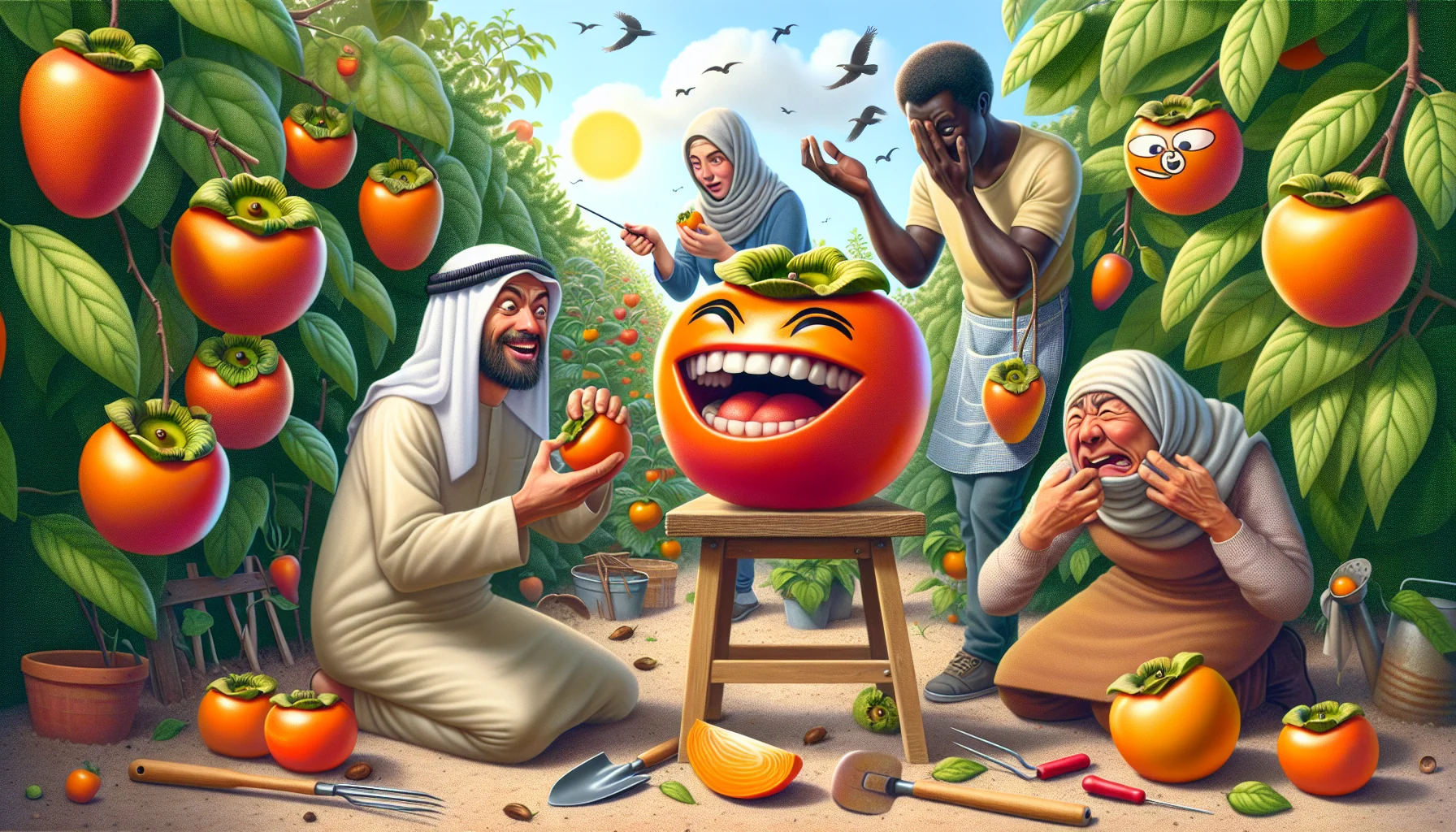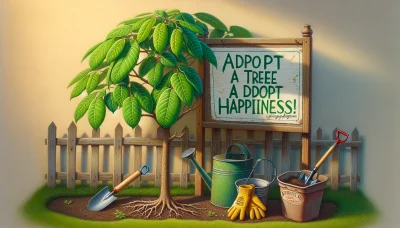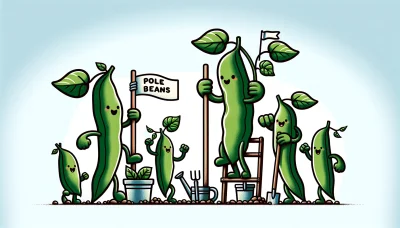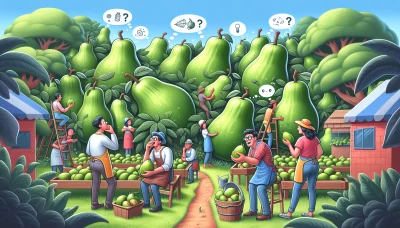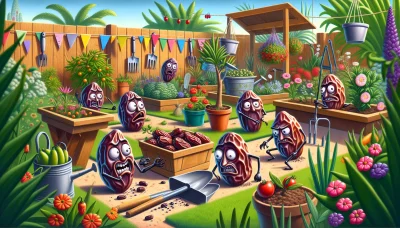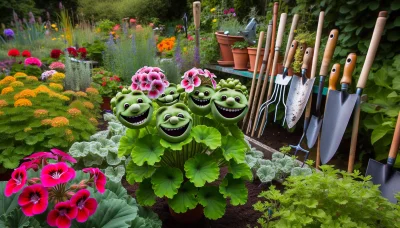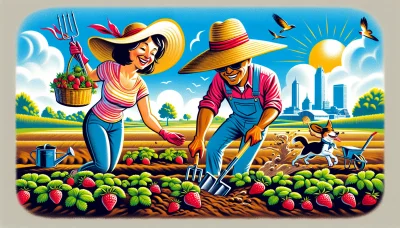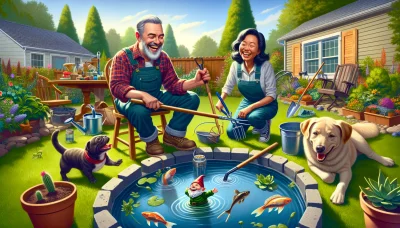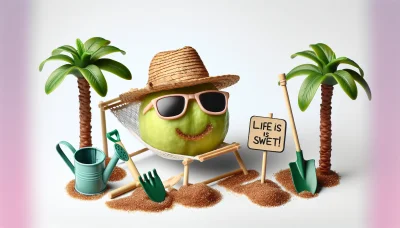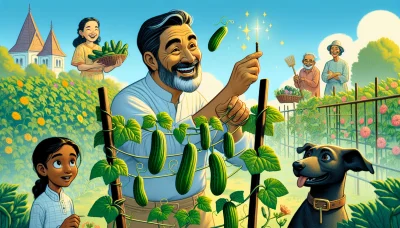How to tell when a persimmon is ripe Quiz
Test Your Knowledge
Question of
How to Tell When a Persimmon is Ripe
Identifying when a persimmon has reached its peak ripeness is a crucial skill for both gardeners and fruit enthusiasts alike. The ability to discern the perfect time for harvest can greatly enhance the eating experience, ensuring the fruit's best taste and texture. This knowledge not only prevents the disappointment of biting into an underripe or overripe fruit but also maximizes the culinary potential of persimmons in various dishes.
Types of Persimmons
Persimmons can be broadly categorized into two main types: astringent and non-astringent. Astringent persimmons contain high levels of tannins and are bitter when unripe. They must be fully ripe and soft before they can be enjoyed. Non-astringent persimmons, on the other hand, have lower tannin levels and can be eaten while still firm.
- Hachiya: A popular astringent variety, Hachiya persimmons are acorn-shaped and need to be fully ripe and soft before consumption. They are known for their rich, sweet flavor.
- Fuyu: Fuyu persimmons are non-astringent and can be eaten while still firm. They are squat and resemble tomatoes in shape. Fuyus are sweet and crisp, making them ideal for fresh eating.
Visual Indicators of Ripeness
Understanding the visual cues of ripeness in persimmons is key to enjoying this unique fruit at its peak. Persimmons, which come in varieties such as Fuyu and Hachiya, change in color, texture, and appearance as they ripen, offering clear indicators for when they are ready to be consumed.
For both major types of persimmons, color is a primary indicator of ripeness. Unripe persimmons often have a bright orange hue, which deepens into a rich, reddish-orange as they mature. The transformation is more pronounced in Hachiya persimmons, which must be fully ripe before eating to avoid their astringent taste. Fuyu persimmons, on the other hand, can be enjoyed even when they are slightly firm and their color has just begun to deepen.
Texture also plays a crucial role in determining the ripeness of persimmons. As persimmons ripen, their flesh becomes softer. This is especially important for Hachiya persimmons, which transition from being very firm to completely soft and almost jelly-like in texture when ripe. Fuyu persimmons, being non-astringent, are more versatile, allowing for consumption even when they have a crisp texture, similar to that of an apple, but they also become softer as they ripen.
The appearance of persimmons can further guide you in assessing their ripeness. A ripe persimmon may exhibit a glossy skin that is smooth and free from blemishes. Additionally, the calyx—the leafy cap on top of the fruit—should appear fresh and green. Overripe persimmons might start to wrinkle and can feel overly soft to the touch, indicating that they are past their prime for most culinary uses.
In summary, when selecting persimmons, look for fruits with a deep orange-red color, a soft texture that yields to gentle pressure (especially for Hachiya), and a glossy, blemish-free appearance. These indicators will help ensure that you enjoy the sweet, honey-like flavor of ripe persimmons to its fullest.
How to Test Persimmon Ripeness
- Check the softness of the persimmon by gently pressing the skin. If it feels soft, it is likely ripe.
- Look at the color of the persimmon. A ripe persimmon will have a deep, rich color.
- Try to remove the leaf cap at the top of the persimmon. If it comes off easily, the fruit is probably ripe.
- Smell the persimmon near the stem. A sweet, fragrant aroma indicates ripeness.
Harvesting Tips
Harvesting persimmons properly ensures you get the best taste and quality from your fruit. One crucial aspect to consider is the timing of the harvest. Persimmons are best harvested when they are fully colored but still firm. This stage indicates they have developed their full flavor but are not overly soft, which can make them difficult to handle without causing damage.
The right time of day for harvesting persimmons is in the morning after the dew has dried. This timing helps to reduce the risk of fungal diseases which can be more prevalent if the fruit is collected while still wet. Additionally, cooler morning temperatures help to keep the fruit from becoming too soft during the harvesting process.
When it comes to tools, using the right ones can make a significant difference. For persimmons, it is recommended to use sharp pruning shears or a garden scissors. This allows for a clean cut that does not damage the branch or the fruit. It's important to cut the fruit with a bit of stem attached, to avoid creating open wounds on the fruit that could lead to decay.
Remember, gentle handling is key to preventing bruises and preserving the fruit's quality. With these tips in mind, you're ready to harvest persimmons at their peak.
Storing Persimmons
To ensure persimmons ripen to perfection, it's crucial to store them correctly. Persimmons continue to ripen after being picked, so how you store them can greatly affect their taste and texture. For the best results, keep unripe persimmons at room temperature, away from direct sunlight. Once they've ripened, you can move them to the refrigerator to slow down the ripening process and extend their shelf life. Remember, the key to perfect persimmons is monitoring their ripeness and adjusting their storage location accordingly.
- Do keep unripe persimmons at room temperature.
- Do store ripe persimmons in the refrigerator.
- Do check persimmons regularly for ripeness.
- Don't store persimmons in direct sunlight.
- Don't keep ripe persimmons at room temperature for too long.
- Don't store persimmons in a sealed container unless you're trying to speed up the ripening process.
Common Mistakes to Avoid
When trying to determine if a persimmon is ripe, many people often make avoidable errors. Identifying a ripe persimmon is crucial for enjoying its sweet, honey-like flavor without the astringent taste that unripe ones can have. Recognizing these common mistakes can help ensure you pick or purchase persimmons at their peak ripeness.
- Judging by color alone: While color can be an indicator, ripe persimmons can vary in color intensity based on their variety. Instead, focus on the fruit's softness.
- Ignoring the variety: Persimmons come in varieties like Fuyu and Hachiya, each with different ripeness indicators. Know the variety you have to apply the correct ripeness test.
- Not checking for softness: A ripe persimmon will yield slightly to gentle pressure, similar to a ripe tomato. Be gentle to avoid bruising the fruit.
- Overlooking the calyx: The calyx (the leafy top) should be easy to remove if the persimmon is ripe. A stubborn calyx often indicates the fruit needs more time to ripen.
- Forgetting to smell: Ripe persimmons emit a sweet, floral fragrance. An absence of smell can indicate the fruit is not yet ripe.
